
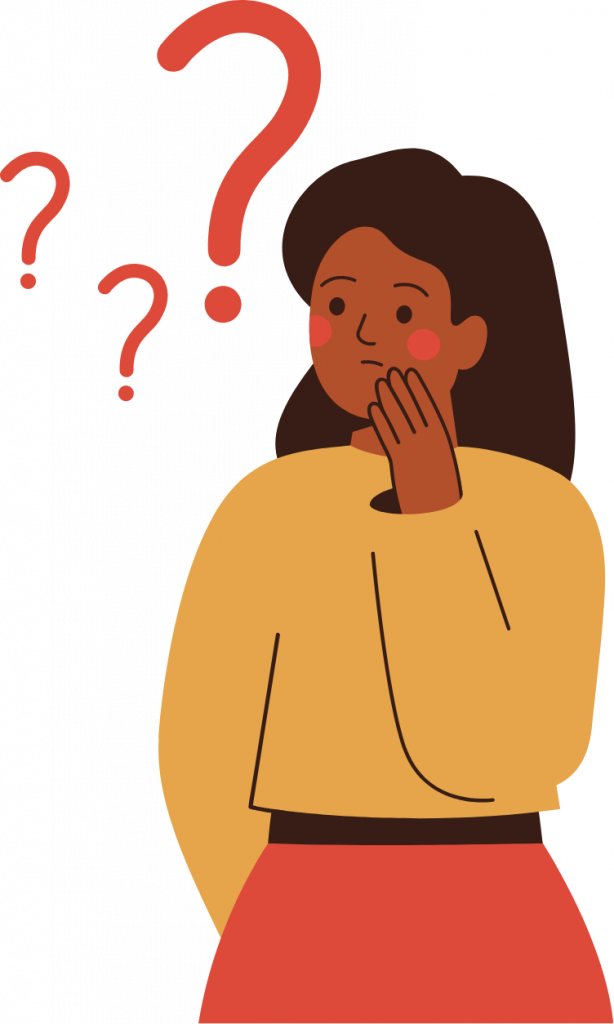
Anxiety
What Is it?
Anxiety is a normal part of life. We all feel anxious at times. Anxiety helps to protect us. Think of a driver slamming on the brakes when someone cuts them off in traffic. This reaction keeps the driver safe. This is anxiety. Anxiety becomes problematic when the worrying does not shut off and it starts interfering with the person’s life. Anxiety is like a tape recorder which plays on repeat in a person’s head. Anxiety disorders are characterized by extreme fear, worry, and behavioural changes as a response to the fear. Anxiety is the constant worry of “what if?”. “What if this happens?” … “What if that happens?”. This feeling of “what if” is in relation to a future event or threat, whereas fear is from a current threat, whether it is real or perceived.
There are several common anxiety disorders.
Generalized Anxiety Disorder
Generalized Anxiety Disorder
Generalized anxiety disorder is constant worrying. The worrying/anxiety is difficult to control. The person may have anxiety about daily tasks. Compared to others, people with generalized anxiety disorder (GAD) worry more often.
Their worries could include but not limit to:
- Being on time
- School
- Small decisions
- Relationships
- Personal health
- The health of someone they care about
- The future
- The state of the world
What could feel like a little thing to others might send the person spiraling into a state of worry. Their brain might start “chaining” worries. This means they could start with one worry which leads to the next on to the next.
For example, there is a test on Monday. A person with anxiety might start thinking:
“What if I fail this test?”
“What if my parents get mad and start fighting because I failed my test?”
“What if my parents get a divorce?”
“What if one of my parents has to move out and I never see them again?
Panic Disorders
Panic disorders are characterized by recurring panic attacks. Panic attacks are one of those things people will sometimes use to describe worrying, but that is not quite a panic attack. Panic attacks are more than feeling worried or apprehensive. They can be triggered by certain things or seemingly come out of nowhere. If someone has one panic attack, that does not mean they have panic disorder. It becomes problematic when the individual is worried or anxious about having more panic attacks.
Phobias
Phobias are fear about a certain thing (situation, event, object, animal, etc.). The level of fear is overwhelming and amplified compared to the actual level of danger. It is more severe and longer lasting than feeling nervous or anxious about something. Phobias can affect how a person functions in their daily life.
The most common phobias are to:
- Situations
- Nature
- Animals
- Blood
- Others
Social Anxiety
Social anxiety, also known as social phobia, is when a person experiences anxiety or fear in relation to social situations. The fear is around certain or all social situations (talking in class, dating, meeting new people, doing things in front of people, etc.). The anxiety feels uncontrollable. The worry can last days or weeks before the event even happens. They might replay interactions or incidents repeatedly in their head. The person might also feel physical symptoms during social interactions.
A person with social anxiety could be triggered by the following:
- Meeting new people
- Attending social gatherings
- Going to work, school, the grocery store, etc.
- Eating or drinking in front of people
- Starting conversations
- Eye contact
- Dating
- Returning items to a store
- Asking for help
- Answering a question in class
- Using a public restroom
Separation Anxiety Disorder
Feeling anxious about being separated from loved ones is a natural reaction in young children (between 18 months and 3 years of age). If the anxiety persists and gets worse, it might be separation anxiety disorder. The anxiety is usually about being separated from a parent or caregiver. Separation anxiety disorder is not only for children. It can impact teenagers and adults. This can cause problems in going to work, leaving the house, going to school, etc.
Obsessive-Compulsive Disorder
Obsessive-compulsive disorder (OCD) is an anxiety disorder which is characterized by a pattern of distressing thoughts and fears. These obsessions lead to compulsions which are repetitive behaviour. This can cause significant distress and often interferes with daily tasks and activities.
There is a common belief that OCD is simply being neat and tidy. That is not the case. While a person with OCD might make things orderly, it is not just because they like it that way. OCD makes the person feel very stressed or as if something bad will happen if things are not orderly. If the person tries to ignore the obsessions and compulsions, they become worse. The anxiety becomes more severe.
Obsessions could have the following themes:
- Unwanted thoughts
- Needing things to be neat and orderly
- Difficulty with the unknown
- Fear of dirt, germs, or contamination
- Violent thoughts about losing control and hurting self or others
Compulsions could have the following themes:
- Orderliness
- Checking things (locks, taps, oven, etc.)
- Strict routine or schedule
- Cleaning and washing
- Counting
- Need for reassurance
Myths & Facts
FACT – Anxiety disorders are real. They are not just something a person can turn off.
If someone has not experienced anxiety, they often think it is something someone can just shut off. That is the difficult thing about mental health issues. It is not something someone can see so they assume it is not real or serious. That is not the case. Anxiety disorders are real and interfere with a person’s ability to function during the day. It can also cause the person to overreact when something triggers the person. It can be hard for the person to explain their reactions or anxiety. No one has a switch to turn off their emotions. It is the same with anxiety. A person with an anxiety disorder cannot just decide to not have an anxiety disorder anymore. Their experience is valid.
FACT – Anxiety disorders have similar symptoms, but they are not the same.
While different anxiety disorders have similar feelings, they are not all the same. Each anxiety disorder is affected by different things. For example, someone with generalized anxiety disorder is not triggered by anything specific whereas social anxiety is triggered by social situations. Anxiety disorders are different for everyone. Two people with the same disorder could have different experiences, symptoms, and severity.
FACT – Children can be impacted by anxiety, too. Anxiety disorders can impact anyone of any age.
This is a common misunderstanding. People often think children and youth cannot struggle emotionally, but that is not true. It can be tricky because children who have anxiety are often quiet and well-behaved, so people do not notice. The child does not want to stand out. There are some kids who act out when they are struggling with anxiety which can also mean they do not get the help they need and deserve.
It is important to connect with help when struggling with anxiety. If anxiety goes untreated, it can become worse, and the person may miss out on very valuable opportunities.
FACT – There are many types of treatments that can help treat anxiety.
There are many different types of treatments for anxiety disorders. The two main types of treatment are therapy and medication. Therapy can help the person learn skills to deal with their symptoms. There are also different types of medications that help with the symptoms of anxiety. It all depends on the type of anxiety disorder the person has as well as other factors.
There are also other things that can be used to help manage the symptoms of anxiety. Developing a healthy lifestyle can help support mental health.
More tips for managing anxiety:
- Eat well and be active. To be healthy, we must take care of our bodies too. Exercise helps to reduce stress. Practice moderation.
- Relaxation techniques
- Avoid smoking, caffeine, alcohol, and recreational drugs
- Get enough sleep. Sleep helps with regulating emotions. Lack of sleep makes us more vulnerable and sensitive to stress.
See below for more wellness tips.
FACT – Everyone feels anxious from time to time, but not everyone has an anxiety disorder.
Anxiety is a part of life. The nervousness or anxious feelings are experienced by everyone. The cause of the anxious feelings is usually the result of a change or challenge in the environment, whether good or bad. This makes it tricky when talking about anxiety, but there is a difference between anxiety and anxiety disorders. Everyone has anxiety (feels anxious) periodically, but not everyone has an anxiety disorder. Anxiety disorders start to interfere with life and wellness.
FACT – Healthy coping skills help to support positive mental health, but it will not cure anxiety disorders.
A healthy lifestyle can help deal with the symptoms of anxiety. Exercising, sleeping, eating well, relaxation techniques, and hobbies can help to reduce stress and promote mental wellness. This does not cure anxiety. While eating well and cutting caffeine can help anxiety, it will not make anxiety disappear. It is about learning how to deal with the symptoms, finding a treatment that works for the individual, and asking for help when needed.
FACT – Social anxiety and shyness are different.
There is a common belief that social anxiety is someone being shy. That is not the case. Shyness is not a disorder. It is a personality trait. There are some people who are shy and have social anxiety, but that is not the case for everyone. Not everyone who is shy has social anxiety, and not everyone who has social anxiety is shy. There are people with social anxiety disorder who like to be around many people and the center of attention once they overcome their social anxiety. Many people who are shy do not view their shyness poorly. People with social anxiety disorder find it upsetting.
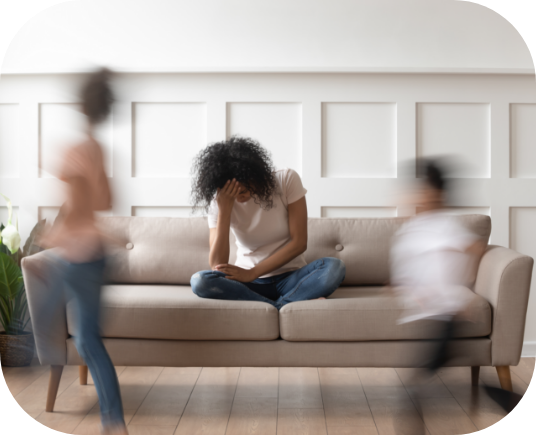

Causes of Anxiety
Like any mental health concern, the cause of anxiety is not straightforward. Everyone has a different story. The causes are not widely known or understood, but there are several risk factors. Some people are more likely to develop anxiety than others.
Some risk factors of developing anxiety:
- Genetics
- Trauma
- Excessive stress
- Different personality types
- Substance use/abuse
- Medical Problems
- Medications
- Other mental health disorders
As with any mental health disorder, it is important to remember it is not the person’s fault. It is not a personality or character flaw.
What Does it Look Like?
Generalized Anxiety Disorder
Symptoms could include:
- Restlessness
- Easily tired
- Mind blanking
- Difficulty concentrating
- Tense muscles
- Moodiness
- Issues with sleep
- Perfectionism
- Hates or strongly dislikes the unknown, so they are constantly looking things up, seeking reassurance, etc.
- Avoids making decisions
- Cancelling plans
- Physical symptoms (headache, stomachache, tiredness, difficulty breathing, muscle tension, etc.)
- Feeling overwhelmed or out of control
- Overgeneralizations
- All or nothing thinking
Panic Disorders
Panic attacks feel like:
- Heart pounding
- Shaking
- Hyperventilating or cannot catch breath
- Feeling restricted from clothes/room
- Chest pain (some confuse it with a heart attack)
- Dizziness
- Light-headedness
- Nausea
- Numbness
- Intense fear or dread
- Crying
- Loss of control
- Feeling out of control or claustrophobic
Panic disorder can also include:
- Avoiding places where panic attacks have occurred
- Avoiding crowded spaces and strenuous activity
- Fear about having another panic attack
Phobias
Symptoms could include:
- Immediate reaction to the object or situation
- Fear is consistent (the person gets scared every time they are exposed to it)
- Bigger reaction than the actual threat level
- Actively avoid the phobia
- Awareness their fear is not reasonable, but they feel like they cannot control it
- Amplified fear as the situation or object gets closer to them
- Physical symptoms (increased heart rate, hard time breathing, sweating, etc.)
- Fainting or light-headedness
- Crying or tantrums
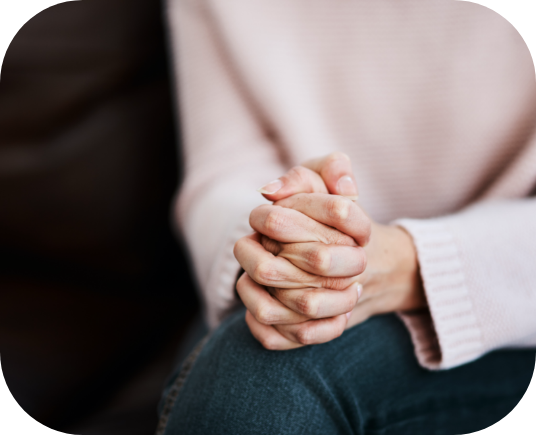
Social Anxiety
Symptoms could include:
- Negative thoughts about self and how others will react to them
- Constantly thinking about how others are perceiving them/how they are acting in social situations
- Physical symptoms of anxiety (blushing, sweating, shaking, racing heart, dizziness, shortness of breath, stomachache, nausea, etc.)
- Worried other people will notice physical symptoms
- Avoid social situations
- Avoid drawing attention to themselves in social situations
- Worry other people do not like them or that they are being judged
- Difficulty in social situations
Obsessive-Compulsive Disorder
Symptoms could include:
Obsessions
- Not wanting to touch items other people have touched
- Doubts and second-guessing if something has been done properly (locking the door, turning off appliances, etc.)
- Extreme discomfort when things are not orderly or lined up
- Thoughts or images of driving a car through a group of people
- Thoughts of shouting inappropriate things in public or behaving inappropriately
- Upsetting sexual images
- Avoidance of triggers (touching others, etc.)
Compulsions
- Arranging things a certain way
- Repeating words, prayer, or phrases silently
- Counting in a certain pattern
- Checking things repeatedly to make sure they are off or locked
- Washing hands until raw
These obsessions and compulsions are paired with anxiety or dread; it is not just personal preference.
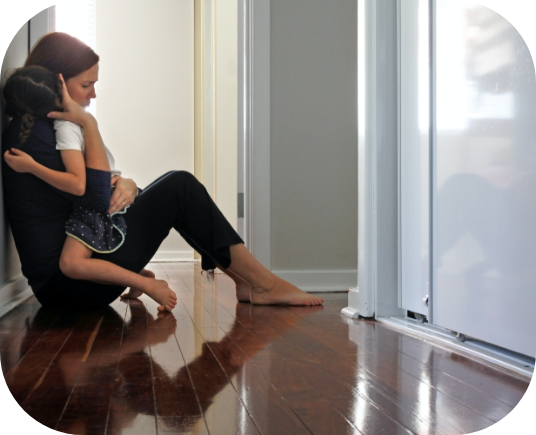
Separation Anxiety Disorder
Symptoms could include:
- Fear something bad will happen to loved ones while separated
- Fear of something happening to self
- Fear of something unexpected happening
- Fear of being left or forgotten about
- Physical symptoms of anxiety (racing heart, sweating, hot flashes, blushing, headache, stomachache, digestive issues, frequent urination, shortness of breath, etc.)
- Feelings of fear, shame, anxiety, anger, helplessness, and embarrassment
- Avoiding leaving the house
- Disliking alone time
- Being sick to avoid school, work, or activities
- Not wanting to go somewhere without a loved one
- Crying when being left
What to Do if You Have Anxiety
When you are trying to cope with anxiety, it can feel very overwhelming. It can be hard to know what to do and it may feel hopeless. There is help. There is hope. What can you do if you are struggling with anxiety?
First, identify if you are not doing well. It is not an easy thing to admit. Just remember, we cannot be tiptop all the time. It is okay not to be okay. It is about seeking help.
Second, talk to someone. Seek help from someone you trust whether it be a loved one, doctor, or a mental health professional. You deserve to feel better. It is important to take care of yourself and feel better.
Third, practice self-care. Make healthy choices to support your mental health. Take some time for you to feel better, to unwind, and to take care of yourself.

How to Help a Loved One Who Tells You They are Struggling?
When a loved one tells you they are struggling, it can be terrifying, and it can be hard to know what to do/say. It is easy to become caught up in emotions. Many people fear that they might say the wrong thing. We often want to try to fix our loved one’s problems or counsel them, but that is not your job. Your main job is to connect your loved one to help.
The following are some guidelines of what to do when your loved one tells you they are struggling and how to handle those difficult conversations. This is not to counsel the person. This is to get the person connected with a helping professional. Please remember the conversation will not be linear like on the page. These are guidelines of some things to consider.
- Take a deep breath and stay calm. The person is telling you something scary and personal to them. This is terrifying for both of you. Take a moment to gather yourself and take a deep breath. Remember, this is about them and their experience. When we care about someone and they tell us about their struggles, we sometimes react with what seems like anger. This is often an outward display of fear which comes across as anger. This can make it difficult for the person to open up to you.
- Practice self-awareness. Take a moment to recognize your own biases or judgements about mental health issues. You are entitled to your opinion, but remember this conversation is about your loved one. It is about their emotions, experiences, and perception. It is all valid and real for them. If you are going to have the conversation, place your judgements or preconceived notions aside to allow for understanding and compassion.
- Remember VEER Validate, Encourage, Empower, Refer. (This is not counselling the person. It is connecting them with help.)
Validate – Validating is so important. It is letting the person know what they are feeling is okay. It is acknowledging their emotions as understandable.
For example:
- Yeah, that would be frustrating.
- I am sorry that happened to you.
- It is understandable you feel that way. I would feel that way, too.
- I believe you.
- From what you are saying, I am hearing you are…because of… Is that correct?
Encourage – This is letting the person know they did a good thing by telling you. Talking about mental health struggles can be very challenging. Let them know they are doing the right thing by telling you.
For example:
- Thank you for telling me. That must have been challenging.
- You did the right thing by telling me.
- I am here for you.
Empower – Struggling with mental health issues can be overwhelming, so it is important to let the person know there is help and they can feel better.
For example:
- I know things seem really overwhelming, but there are resources and people to help.
- Let’s find some things which can help you feel better.
- You deserve to feel happy! We will find a way to get there.
Refer – Connect the person with help. They deserve to feel happy and healthy again. There are resources to help them. The youth needs to get help. You are obligated to connect the youth with professional help. Refer the youth to professional help like a school counsellor, family liaison worker, or an elder. You can also offer them some helplines they can call when they are struggling, too.
For example:
- Here are some phone numbers you can call when you feel like you need someone to talk to.
- Let’s look up some resources and see what you like best.
- There are many options of people you can talk to. We could talk to the doctor, find a counsellor, or elder. What are you most comfortable with?
Sometimes, people are not ready to talk to you. That is okay. It is their choice. Simply let them know you are there to listen if they need someone and offer them some resources.
How Do You Ask Someone About Their Mental Health?
If you have a feeling something is going on, have a conversation with the person if you feel comfortable talking to them. (If you do not feel comfortable, that is okay. You just need to tell someone who will have the conversation with them and connect them with help.)
The following are some guidelines as to what to do if you suspect someone is suicidal or not doing well. This is not to counsel the person. This is to get the person connected with a counsellor, doctor, or another professional. Please remember the conversation will not be linear like on the page. These are guidelines of some things to consider.
Before You Have the Conversation
- Make sure you have time for it
- You are in a place the person will feel comfortable talking to you
- Approach the situation with compassion
- Make sure you are willing to listen
- Remember you can initiate the conversation and let them know you are there, but it may take some time before they talk to you.
- Take notice. If you feel like something is going on with someone, there likely is something. Trust that gut instinct.
- Talk to them. Open the conversation in a nonjudgemental and compassionate way. Begin the conversation by stating a change you have noticed. Use “I” statements so it does not feel like you are accusing them.
- Example: “Hey, I have noticed you have been cancelling plans lately. How are you doing?” or “I heard you putting yourself down in class. What’s been going on?”
- Remember VEER Validate, Encourage, Empower, Refer. (This is not counselling the person. It is connecting them with help.)
Your loved one may not be ready to talk, and that is okay. Let them know you are there to talk whenever they are ready. You can give them numbers to helplines for support.
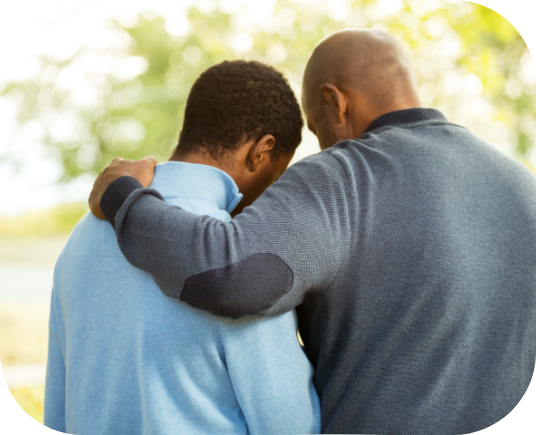
Follow-up Support for Someone with Anxiety
- Be understanding
- There are times when the person might cancel plans, are not feeling well, or need a break.
- Support your loved one in making healthy choices
- Your friend might have to make some changes to support their mental health. Support them in making healthy choices.
- Help your loved one manage their anxiety by helping them find positive coping skills
- Model healthy coping skills
- Help your loved one talk through their anxiety
- Be aware of your loved one’s signs of anxiety
- Help and support your loved one face their fear
Things to Avoid
- Belittling your loved one about their mental health
- Threatening your loved one about their mental health
- Telling your friend how to feel
- Counseling your loved one
- Telling your loved one what to do
- Making your loved one’s mental health concerns about you
- Toxic positivity
- Practicing gratitude is a wonderfully beneficial thing to do and can help improve mood and mental health, but the sunshine outlook can sometimes take a dark turn. Toxic positivity is reframing the situation (even tragic ones) in a positive light. This is the “at least…” or “it could be worse…”. It is not letting ourselves (or others) feel the uncomfortable emotions. It is okay to feel upset about something. It is okay to not be okay, but toxic positivity suppresses any of those emotions. Positive outlooks can be a wonderful thing, but not when it comes at the expense of coping with emotions and difficult situations.

Tips for Wellness
There are many things you can do to support your wellness. The following activities can help you support your mental health and manage anxiety symptoms. It is important to also seek professional help.

- Eating well, being active, and getting enough sleep are an important part of promoting mental health.
- Eating well helps your brain and body have energy and the capacity to function.
- Being physically active is a wonderful way to reduce stress by increasing feel-good hormones in the body.
- Sleep is an important part of emotion regulation and the ability to problem solve. Think of a time when you had not had enough sleep and you had a hard time thinking clearly or your emotions felt like a rollercoaster. Sleep is very important your overall health.
- While it may feel like these things help you to relax in the moment, they increase the feelings of anxiety and paranoia with some increasing anxiety immediately and others causing the increase over time
Further Resources
Anxiety disorders – Diagnosis and treatment – Mayo Clinic
Anxiety disorders – Symptoms and causes – Mayo Clinic
Anxiety Disorders (for Teens) – Nemours Kidshealth
Anxiety Happens: It’s Not a Choice | Psychology Today Canada
Anxiety in Children – Anxiety Canada
Anxiety: Causes, Symptoms, Treatment, and More (healthline.com)
Do I have anxiety or worry: What’s the difference? – Harvard Health
Emotion, emotion regulation and sleep: An intimate relationship (nih.gov)
Generalized Anxiety Disorder – Anxiety Canada
Mood and anxiety disorders in Canada – Canada.ca
NIMH » Anxiety Disorders (nih.gov)
NIMH » Social Anxiety Disorder: More Than Just Shyness (nih.gov)
Obsessive-compulsive disorder (OCD) – Symptoms and causes – Mayo Clinic
Separation Anxiety – Anxiety Canada
Separation anxiety disorder – Symptoms and causes – Mayo Clinic
Separation Anxiety Disorder in Children (stanfordchildrens.org)
Social Anxiety Disorder – Anxiety Canada
Social anxiety disorder (social phobia) – Symptoms and causes – Mayo Clinic
Specific phobias – Symptoms and causes – Mayo Clinic
Tips to Manage Anxiety and Stress | Anxiety and Depression Association of America, ADAA
If you would like to speak to someone about mental health issues, the Alberta Health Services Mental Health Help Line is available 24/7, offering information and referrals on any aspect of mental health.
Call toll-free: 1-877-303-2642
Trending Topics
Depression
Depression What Is It? Depression is a mood disorder which means it impacts how a person is feeling. It can cause a person to feel
Accidental Overdose
Accidental Overdose What Is it? An overdose is what happens to someone’s body when they take too much of a substance or too many substances.
Online Relationships
Online Relationships Online can be fun! There are games, music, and videos. We can talk to friends and family online. Tips for Being Safe Online:
Dimensions of Health
Dimensions of Health How do you feel when you wake up on your best day? You probably feel well-rested. You probably wake up to a
Identity Glossary
Identity Glossary Pieces of Me There are many things which make you unique. That means there are many things you can love about yourself. Things

